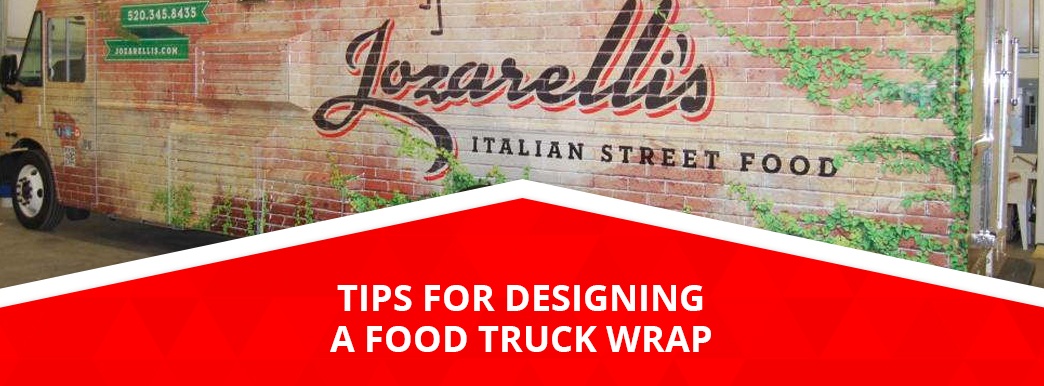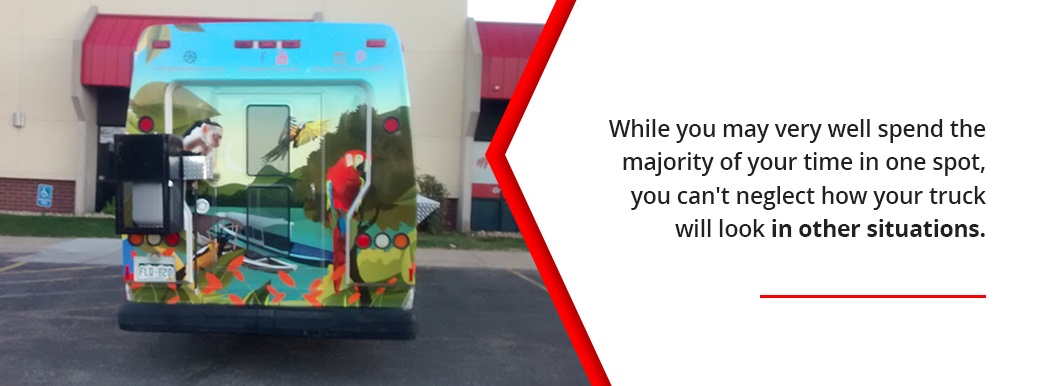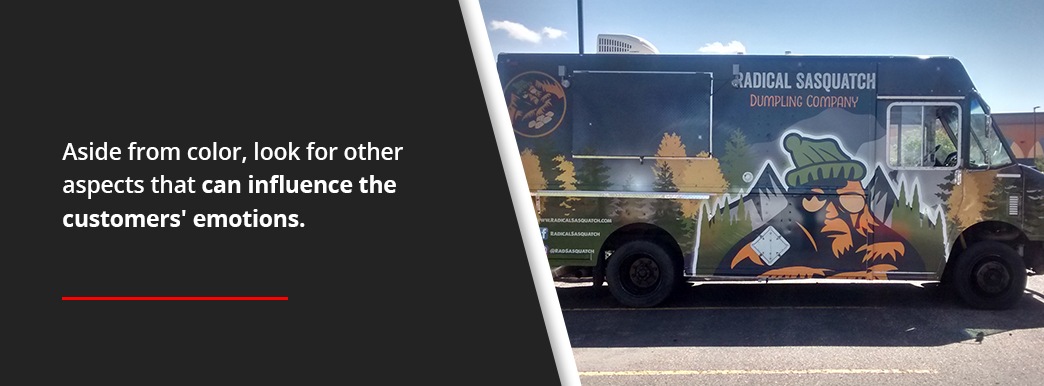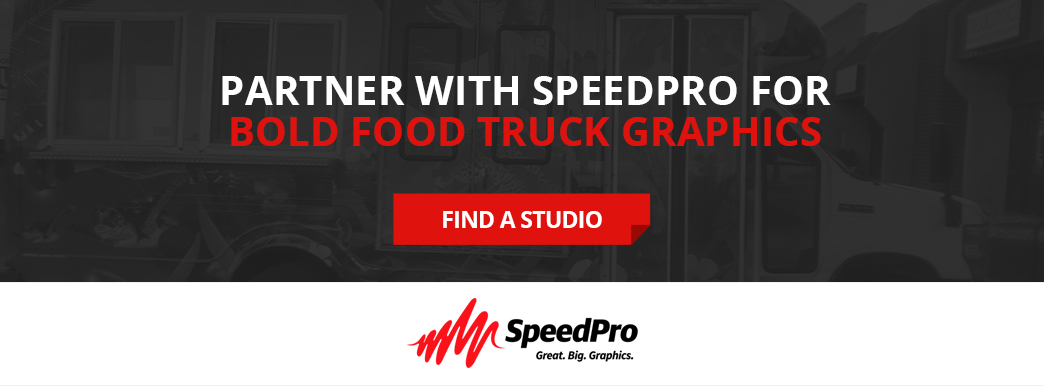
Tips for Designing a Food Truck Wrap
JUNE 19, 2020| SpeedProIn the last decade, food trucks have surged in popularity with a United States market size that doubled from under $500 million in 2010 to $1.1 billion in 2020. Restaurateurs across the country have created food trucks for both niche and popular dishes that span all types of cuisine. With so much competition, how do you make your restaurant on wheels stand out?
Food truck graphics are an integral part of your vehicle and can take the operation to the next level. With the help of a high-quality vehicle wrap, you can cover your truck in branded, eye-catching graphics that pull people in. Of course, to do that, you’ll need a killer design.
6 Tips for Food Truck Wrap Design
Making a food truck wrap design that grabs attention, matches your branding and provides all the necessary information can be a tricky task. We’ve broken things down a bit and made a list of our top tips and tricks for designing a food truck wrap.
1. Go Big or Go Home
Food trucks commonly end up in environments where people see them from far away, like festivals and city streets. Designs with large fonts and imagery are much easier for people to see from a distance. Plus, most of the readability of a sign comes down to several characteristics of its text — namely the height, color and font.
Large lettering is, of course, easier to see, especially if it’s located high up on the truck. After all, people might need to read the name through a large crowd. One way to really boost your visibility in this aspect is to use 3D lettering atop the truck. With a more traditional 2D design, large letters are always a good idea. As for your font, consider big and bold styles that are easy to read. Small, ornate styles could be too difficult for many people to read, especially those with low vision.
Text isn’t the only element that needs to be sized up for your food truck. Images also need to be seen far and wide, whether they are illustrations or photos. Showcasing your menu is great, but don’t overcrowd the truck with pictures of every dish. Choose a select few to show off in high-resolution imagery.
Color will also play a role in how legible your text is from far away. High contrast ensures that readers can differentiate your text from the background and that it is particularly readable for people with low vision. Colors like blue on white, white on black and black on yellow create high-contrast combinations. Check out the guide created by the Outdoor Advertising Association of America (OAAA) to see more options. According to the OAAA, designs with high color contrast improve outdoor advertising recall by 38%, so it’s worth paying attention to.
2. Look at It From All Angles
While you may very well spend the majority of your time in one spot, you can’t neglect how your truck will look in other situations. When you’re driving on the highway, will people still get a positive image of your brand? That drive time provides valuable advertising opportunities. Some estimates say that vehicle wraps can create between 30,000 and 70,000 impressions in a day. While that number is likely for wraps that are on the road all day, your truck will still catch eyes in between setups, so it needs to look good.
The most pressing concern is that your truck’s design shouldn’t be marred by things like opening the doors or the service window. If your design creates unintended imagery or blocks vital information like your logo or text, it isn’t working as well for you as it could be. All of these elements should be visible and clear at all times, whether you’re set up for business or have closed up shop for the day. Design with all configurations in mind.
3. Stay Colorful
Whether you’re stationed on a busy street or at a festival or fair, bright colors can make your food truck stand out against the background. They should also, of course, match your food and brand.
Keep in mind that the color of a food truck wrap will influence the associations that customers have with your food. For instance, a bright green truck might invoke images of freshness and plant-based foods, while a neon color could be fun and vibrant for something with a retro feel. Whatever theme your restaurant has, your colors should support it.
Bold colors are important, and part of being bold means being decisive about your color choices. Don’t use a rainbow of colors that overwhelm the viewer. Too many colors can clash and don’t offer a strong match to your brand identity. Instead, select a few colors that work well together and are a part of your overall look. If you choose your colors well, you can turn your food truck into an excellent display of your brand’s image.
4. Think About the Customers’ Emotions
Color psychology plays into marketing by identifying and appealing to peoples’ associations with certain colors. For example, many consumers find red colors to be bold and create a sense of urgency, so many restaurants choose red. Meanwhile, yellow is often optimistic and creative, but some consider it cheap. Read up on color theories and see if you can use it to your advantage when selecting brand and graphics colors.
Aside from color, look for other aspects that can influence the customers’ emotions. After all, much of marketing is about making people feel a specific emotion. Are you stationed outside of a ballpark, where you want customers to feel the all-American vibes of your classic-recipe hot dog truck? Are you hitting the farmer’s market crowd, where freshness and local ingredients are aspects they value? Try to work with those characteristics in your designs.
An all-American design might feature red-and-white stripes or a pattern that looks like the stitching in a baseball. If you’re appealing to people who like fresh food, you could focus on enticing, crisp images and green colors. Use the things your customers value to elicit certain feelings and positive associations with your food.
5. Don’t Forget the Important Stuff
You’ve got your menu and your logo — what else do you need? Contact information. Make sure your guests know where they can find you. Many food trucks use social media to tell their customers where they’re going to be. If that’s you, make sure your social media tags are listed on your truck, alongside traditional info like your website and phone number. You may even want to include an address if your truck is an extension of a permanent restaurant.
6. Make It Memorable
If you can create a design that stands out in your customers’ minds, you stand a better chance of turning them into repeat customers or improving their recall of you. Don’t be afraid to add personality to your design. If you have a unique mascot, an exciting new concept or a bold food trailer wrap idea, use it to your advantage.
What Does My Wrap Design Need?
The anatomy of a food truck design consists of a few elements that you’ll need to manage if you want it to look its best.
These elements include:
- Color: We’ve already talked a bit about color, but remember that in crowded or bright environments like festivals, a food truck needs to stand out. Vibrant or bold colors can get the job done and increase your truck’s visibility.
- Style: While the look of your truck will somewhat depend on its physical design, many food trucks lean into the style of the cuisine they serve. A truck serving artisanal coffee might want to match the vibe with a cursive script logo, an awning and pastel colors, while a late-night pizza truck could use bold colors, bright lights and in-your-face text. Let your menu influence your style — it could also make things more memorable, as people have more reason to know what you’re like.
- Logo: A recognizable logo that fits your restaurant’s look and feel will go a long way in ensuring people remember you. It should be big — many food truck owners place their logo full-size on the side of the truck that doesn’t have the serving window to maximize visibility. You’ll also want to place it in multiple locations throughout the vehicle, like the area above the window and on the back doors. If you own a permanent restaurant as well, make sure to keep your truck and restaurant logos the same to improve brand recognition and give people a better idea of what you offer, assuming they’re familiar with one of your serving locations.
- Contact information: Though your contact information doesn’t need to be as large as your logo, it’s still a critical part of your branding. After all, when people fall in love with your food, they need to know where to find you in the future. You can put up your website and phone number, along with any social media sites you’re on. If your primary way of alerting fans to your location is through social media, you may also want to include a callout that tells them to follow you for that information.
- Lights: If you’ll be out and about at night, you may need to think about the lighting of your vehicle. Some edgy-looking trucks do well with colored undercarriage lights or neon rope lights. Other designs might use light-up lettering, string lights or awning lights. Think about how your lighting contributes to your design. Is it more traditional or bold and bright? Do critical elements of your design get lost if they aren’t properly lit up? Carefully consider how your design will look in this setting.
- Patterns: Some food trucks will use patterns on part or all of their design, such as a wood print on the area below the serving window to mimic a counter or light silhouettes of the food item you serve in the background of the wrap. Consider patterns that can complement your design, add an atmospheric quality or give customers a better idea of what your food is like.
- Organization: Consider how you arrange your elements. Prioritize things like your logo and the use of brand colors. Your menu items, of course, can be smaller but still prominent. You don’t have as much space on a truck as in a restaurant, so maximize your use of design real estate and focus on the essential information.
- Menu: It may be tempting to put a wide selection of items on your menu, but you’re better off focusing on just a few of your best dishes. Don’t overwhelm people by providing too many choices. Some food trucks will rotate their menu, as a way to offer diverse meals without crowding the menu. As far as your display, remember to fit it in with your overall theme. If your design is edgy and modern, a handwritten chalkboard sign might look a little out of place, but it could work well for a cute cafe or deli truck.
All of the elements of your truck will need to work together if you want a cohesive design.
Which Wrap to Choose
In general, when we talk about food truck graphics, we refer to full wraps. They cover the vehicle from nose to bumper in a layer of weather-resistant vinyl. They also protect your vehicle’s paint job from damage from rocks and scratches.
From an advertising perspective, full wraps offer the clearest advantage. You can use every inch of the truck for your design, meaning there’s more room for different elements and greater visibility. You can include everything you need and then some. It also allows you to match your food truck graphics to the right color. If you’re matching multiple trucks to each other or need to match the colors of a permanent restaurant, the color-matching capabilities of a full wrap can make it simple and accurate.
The other option you can use is a partial wrap. These wraps are easier on the wallet and good if you want something temporary. If you know you want to rebrand or upgrade your truck in the future, it can be a good solution. Partial wraps cover portions of a vehicle, such as a strip across the middle or just the top half of a truck. They’ll help you get the basics onto your truck but won’t offer as much advertising space. You’ll also have to take care to ensure the colors work with your paint, either through matching or coordinating them.
Partner With SpeedPro for Bold Food Truck Graphics
Whichever wrap you choose and however you decide to design it, SpeedPro is there to help. We can even assist with the design process, offering support for color coordination, font and text selection and more. Our technicians and designers know the process well and can work with you to develop a wrap that meets your business needs.
Our vinyl wraps offer vivid color reproduction so your food truck can stand out from the crowd, and our advanced color-matching process ensures you stay on-brand to get as much recognition as possible. To learn more about food truck wrapping, find a SpeedPro near you today.



















![What does my wrap design need? [list]](https://www.speedpro.com/wp-content/uploads/2020/05/04-What-Does-My-Wrap-Design-Need_-Pinterest.jpg)
